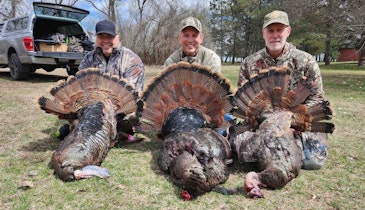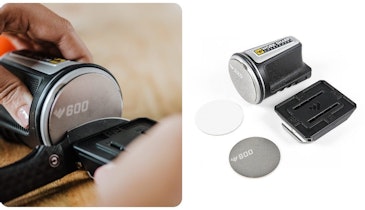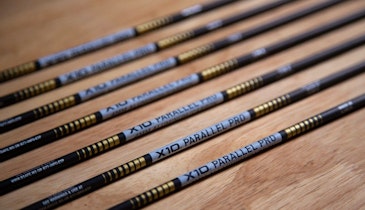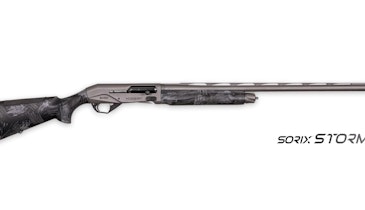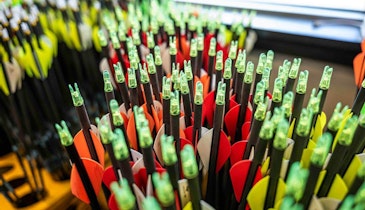As you get older, you realize you can’t turn back the hands of time and do differently some of the crazy stuff you’ve done. In my case the list is long as your leg, and one of the things I wish I had done in my early years is take better care of my hearing.
Today I’m pretty deaf, the result of being around too much loud stuff without wearing hearing protection. Guns going off, things blowing up, classic rock and roll, street cars with big motors and no mufflers, and much more have taken their toll.
Today you don’t have the excuse we had. which was simply, we didn’t know better. You do. That’s why — if it’s legal for you to do so — you should consider using a suppressor on your firearms.
Are Suppressors Really Silencers?
Suppressors, also known as silencers, are the hearing protection of the 21st century sportsman. Also called “cans”, suppressors were invented by Hiram Percy Maxim in 1903. Maxim also invented the automobile muffler.
Despite common misconceptions, suppressors are not silent. They are simply mufflers for firearms, which function by trapping the expanding gasses at the muzzle and allowing them to slowly cool. More specifically, a suppressor uses a series of baffles that slows the release of these gases, which are what produces the loud noise when a firearm is triggered. How much the noise is lessened is a function of several things, including the size and type of suppressor, the cartridge and barrel length of the firearm and more.

Noise-induced hearing loss and tinnitus are two of the most common afflictions for recreational shooters and hunters. Suppressors reduce the noise of a gunshot by an average of 20-35 decibels (dB), which is roughly the same as earplugs or earmuffs. By decreasing the overall sound signature, suppressors help to preserve the hearing of recreational shooters, hunters, and hunting dogs around the world.
Even the most effective suppressors on the smallest and quietest calibers like the .22 long rifle reduce the peak sound level of a gunshot to between 110-120 dB. To put that in perspective, according to the National Institute for Occupational Safety and Health, or NIOSH, that is as loud as a jackhammer (110 dB) or an ambulance siren (120 dB). For normal caliber handguns and rifles, suppressed sound levels routinely exceed 130 dB, just shy of OSHA’s “hearing safe” threshold of 140 dB.
From a hearing conservation perspective, according to Dr. William W. Clark, the current Director of the Washington University School of Medicine’s Program in Audiology and Communication Sciences, says, “the most serious threat to hearing comes from recreational hunting or target shooting.”
This is largely because many choose not to use traditional hearing protection devices like earplugs and earmuffs. Often this is because they want to be able to hear their surroundings. Multiple studies have found that between 70 percent to 80 percent of hunters never wear earplugs or earmuffs, and nearly half of all target shooters don’t consistently wear traditional hearing protection. Thus, it should come as no surprise that for every five years of hunting, hunters become 7percent more likely to experience high frequency hearing loss.
In a 2011 study, the Centers for Disease Control and Prevention, or CDC, stated, “the only potentially effective noise control method to reduce students’ or instructors’ noise exposure from gunfire is through the use of noise suppressors that can be attached to the end of the gun barrel.” In a similar study from 2014 on noise exposure at shooting ranges, NIOSH recommended, “if feasible and legally permissible, attach noise suppressors to firearms to reduce peak sound pressure levels.” And in March 2017, the National Hearing Conservation Association’s Task Force on Prevention of Noise-Induced Hearing Loss from Firearm Noise stated that “using firearms equipped with suppressors” is one of “several strategies [that] can be employed to reduce the risk of acquiring NIHL and associated tinnitus from firearm noise exposure.”
According to the American Suppressor Association, today the use of suppressors is legal in 42 states — the exceptions are Hawaii, California, Illinois, New York, New Jersey, Delaware, Rhode Island and Massachusetts. And in the 42 states where suppressors are legal, they are allowed for hunting in all but two (Connecticut and Vermont).
How Do You Buy a Suppressor?
Suppressors are regulated by the Bureau of Alcohol, Tobacco, Firearms and Explosives. To legally purchase or possess a suppressor you must:
- Be at least 21 years of age to purchase a suppressor from a dealer;
- Be at least 18 years of age to purchase a suppressor from an individual on a Form 4 to Form 4 transfer (contingent on state laws), or be at least 18 years of age to possess a suppressor as a beneficiary of a trust or as a member of a corporation (contingent on state laws);
- Be a resident of the United States that is legally eligible to purchase a firearm;
- Pass a BATFE background check with a typical process time of 8 to 10 months;
- Pay a one-time $200 Transfer Tax;
- Reside in one of the 42 states that currently allows civilian ownership of suppressors.
Why the $200 tax?
Ever see the old TV show or the movie, “The Untouchables,” where the Feds were constantly battling evil gangsters like Al Capone during the 1920s and 1930s? On June 26, 1934, the federal government — which often found itself outgunned by the gangsters — passed the National Firearms Act which, “provided for the taxation of manufacturers, importers, and dealers in certain firearms and machine guns, taxed the sale or other disposal of such weapons, and restricted importation and regulate interstate transportation thereof.”
Part of the Act was placing a $200 “Sin Tax” on silencers (that’s about $3600 in today’s dollars) that would effectively ban their purchase by the majority of Americans. That $200 tax still stands today.

Are They Hard To Use and What About Accuracy?
“Direct thread” is the most common method of suppressor attachment. This requires the muzzle of your firearm’s barrel to be threaded, which can be easily done by a gunsmith. However, many new rifle models today come with a threaded barrel, the threads being covered by a screw-on end cap when a suppressor is not attached. The suppressor then screws onto the barrel.
There are many thread types, but the most common are 1/2x28 for most .22 calibers, 9mm handguns and AR-15s, and 5/8x24 for rifles of .308 and similar size. Another attachment method is quick attachment, in which a brand-specific adaptor must be threaded to your firearm’s barrel, and a corresponding female adaptor threaded to the suppressor. Then the suppressor can be affixed to the firearm with a partial twist that takes less than a second.
A common question is, will a suppressor affect accuracy?
The answer is, “maybe.” Attaching anything to a rifle barrel can change its harmonics and, thus, its accuracy. This can be true both in terms of group size and point of impact. So you have to spend some range time to get it dialed in. In my admittedly limited experience with suppressors, accuracy has usually improved. A suppressor helps reduce recoil, which always helps your shooting.
In the Field
On a recent elk and mule deer hunt in Montana I hunted with Ed Schoppman, CEO of suppressor manufacturer Silent Legion, a veteran-owned business with a no-compromise attitude in both product and personal integrity. A friend for years, Ed — himself an army veteran with decades in the shooting, hunting, firearms and optics business — is someone I trust when it comes to all things technical. “Suppressors are the future of shooting and hunting,” he said. “There is no real downside to using them and a ton of upside. Once you shoot with a suppressor, it will be hard to go back to shooting without one.”
On this hunt I carried a Remington Gen 2 rifle chambered in .300 Win. Mag. topped with an EOTech Vudu 5-25x50 riflescope and equipped with a Silent Legion SL-30 suppressor. Loaded with Barnes VOR-TX ammunition featuring the Barnes tipped TSX bullet. This combination produced 3-shot, 100-yard groups measuring right at one-half inch. Which essentially was the case using two other loads as well. Recoil was negligible and, when the time came, I made one-shot kills on both animals.
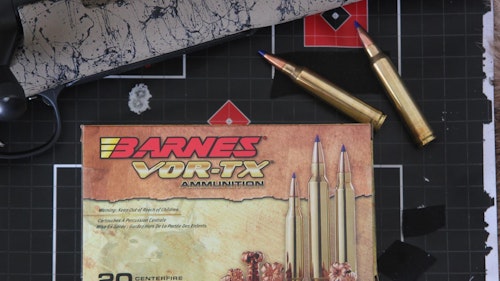
The Future
Introduced in the U.S. House of Representatives on January 9, 2017, the Hearing Protection Act of 2017 (H.R. 367) would amend the Internal Revenue Code to both eliminate the $200 transfer tax on firearm silencers, and treat any person who acquires or possesses a firearm silencer as meeting any registration or licensing requirements of the National Firearms Act with respect to such silencer. Also, any person who pays a transfer tax on a silencer after October 22, 2015, may receive a refund of such tax. The bill also amends the federal criminal code to preempt state or local laws that tax or regulate firearm silencers. It would also greatly shorten the time a person has to wait before acquiring a suppressor.
The bill had gained traction, but the recent national election has changed the picture. “With the Democrats controlling the House, odds are H.R. 367 will face stiff opposition,” Schoppman said. “We’ll keep pushing, of course, but we’ll have to wait and see.”
Regardless, suppressor use for both recreational shooting and hunting is here to stay. If you value your hearing — and you should — you owe it to yourself to check them out.

